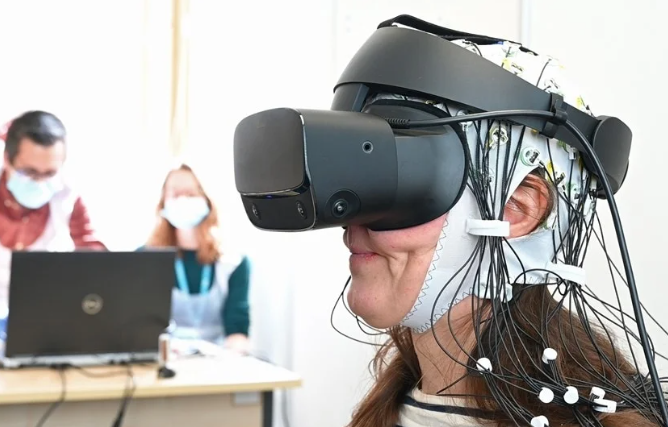Introduction
Fibromyalgia is a chronic pain condition that affects millions of people worldwide. While widespread musculoskeletal pain is the hallmark symptom, many individuals with fibromyalgia also experience allodynia and hyperalgesia—two forms of abnormal pain sensitivity.
- Allodynia occurs when a normally non-painful stimulus (such as a light touch or clothing against the skin) causes pain.
- Hyperalgesia is an exaggerated response to painful stimuli, making even mild pain feel severe.
These symptoms significantly impact daily life, making simple activities like brushing hair, hugging, or resting on a chair uncomfortable or even unbearable. Understanding the mechanisms behind allodynia and hyperalgesia in fibromyalgia is crucial for effective management and treatment.
What Are Allodynia and Hyperalgesia?
Allodynia: Pain from Non-Painful Stimuli
Allodynia refers to pain caused by something that normally wouldn’t hurt, such as:
- Light touch from clothing or bedsheets
- A gentle breeze or temperature changes
- Combing or washing hair
- A friendly pat on the back
Hyperalgesia: Intensified Pain Response
Hyperalgesia is an exaggerated pain reaction, meaning:
- A small bump or bruise feels extremely painful
- Minor injuries result in prolonged discomfort
- Medical procedures, such as injections, cause intense pain
The Link Between Fibromyalgia and Abnormal Pain Sensitivity
People with fibromyalgia have an overactive pain-processing system, causing their bodies to misinterpret pain signals. This is why fibromyalgia-related allodynia and hyperalgesia make everyday activities unexpectedly painful.
Key Symptoms of Allodynia and Hyperalgesia
- Burning or aching pain from light touch
- Painful sensations in response to mild pressure
- Increased sensitivity to temperature changes
- Discomfort from tight clothing or jewelry
- Pain that lingers longer than usual after an injury
Why Do Fibromyalgia Patients Experience Heightened Pain?
Underlying Causes:
- Central sensitization – The brain becomes overly sensitive to pain signals.
- Abnormal nerve function – The peripheral nervous system misfires pain messages.
- Inflammatory responses – Chronic inflammation may amplify pain perception.
- Neurochemical imbalances – Low serotonin and high substance P levels increase pain sensitivity.
The Role of Central Sensitization in Allodynia and Hyperalgesia
Central sensitization is when the brain overreacts to pain and amplifies sensations. This leads to:
- Constant pain signals, even without injury
- Heightened skin sensitivity
- Fatigue and brain fog due to continuous pain processing
How the Nervous System Malfunctions in Fibromyalgia
- Hyperactive pain pathways send excessive pain messages.
- Dysfunctional pain regulation makes minor discomforts feel severe.
- Nerve miscommunication causes unexpected burning or stabbing sensations.
Neurotransmitter Imbalances and Their Effect on Pain Processing
Key Neurotransmitters Affected in Fibromyalgia:
- Serotonin (Low Levels) → Reduced pain inhibition
- Substance P (High Levels) → Increased pain perception
- Dopamine Dysfunction → Greater pain sensitivity
How Stress and Anxiety Amplify Pain Sensitivity
- Chronic stress increases cortisol levels, worsening pain.
- Anxiety triggers muscle tension, heightening sensitivity.
- Emotional distress lowers the pain threshold.
Practicing relaxation techniques can help reduce pain intensity.
The Connection Between Sleep Disorders and Pain Amplification
- Poor sleep reduces pain tolerance.
- Sleep deprivation leads to heightened nerve sensitivity.
- Restless sleep worsens fatigue and brain fog.
Diagnosing Allodynia and Hyperalgesia in Fibromyalgia
Doctors use:
- Pain sensitivity tests to assess skin reactions
- Pressure threshold exams to evaluate hyperalgesia
- Neurological assessments to rule out other conditions
Conventional Medications for Managing Abnormal Pain Sensitivity
- Antidepressants (Duloxetine, Amitriptyline) → Modulate nerve pain
- Anticonvulsants (Gabapentin, Pregabalin) → Calm overactive nerves
- Muscle relaxants → Reduce tension-related pain
Alternative Therapies for Reducing Pain Hypersensitivity
- Acupuncture – Helps regulate nerve function
- Biofeedback – Trains the brain to process pain differently
- CBD Oil – May reduce nerve pain and inflammation
The Role of Diet in Modulating Pain Sensitivity
- Anti-inflammatory foods (omega-3s, turmeric) help reduce nerve inflammation.
- Magnesium-rich foods improve nerve function.
- Avoiding processed sugars prevents pain flare–ups.
Exercise and Physical Therapy for Desensitization
- Gentle stretching to increase tolerance to touch
- Low-impact activities (yoga, swimming) for pain relief
- Myofascial release therapy to reduce muscle tightness
Coping Strategies for Living with Allodynia and Hyperalgesia
- Wear loose, soft clothing to prevent irritation.
- Use heating pads or cold therapy for pain relief.
- Practice deep breathing and mindfulness to reduce stress.
FAQs About Allodynia and Hyperalgesia in Fibromyalgia
- Are these symptoms permanent?
- They can fluctuate, but proper management can reduce severity.
- Do painkillers work for allodynia?
- Standard painkillers may be less effective; nerve-targeting medications work better.
- Can reducing stress help?
- Yes, stress management lowers pain sensitivity.
Conclusion
Allodynia and hyperalgesia in fibromyalgia result from abnormal pain processing and nerve dysfunction. While challenging, a combination of medications, lifestyle changes, and alternative therapies can help patients regain comfort and improve quality of life.

Click Here to Visit the Store and find Much More….
For More Information Related to Fibromyalgia Visit below sites:
References:
Fibromyalgia Contact Us Directly
Click here to Contact us Directly on Inbox
Official Fibromyalgia Blogs
Click here to Get the latest Chronic illness Updates
Fibromyalgia Stores
